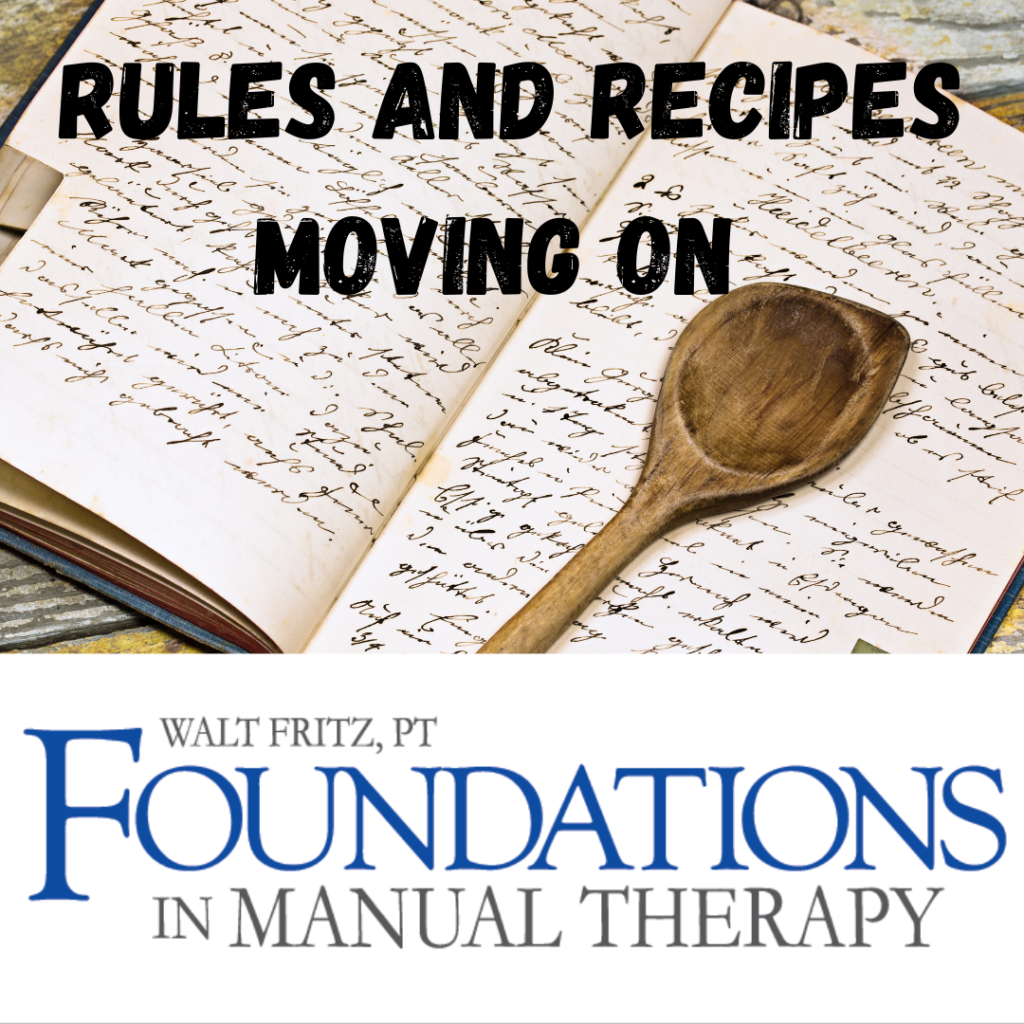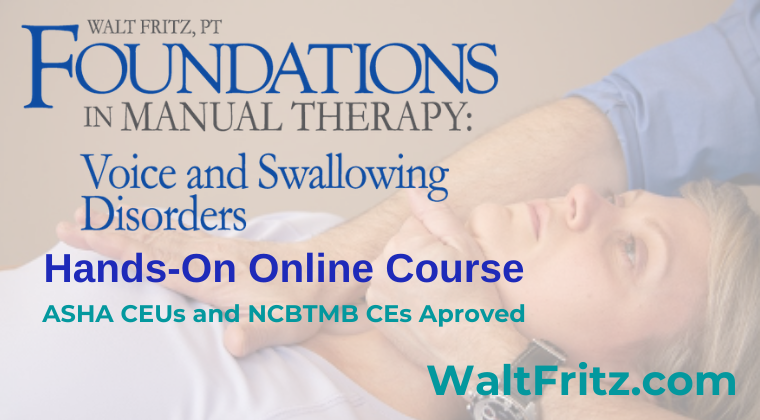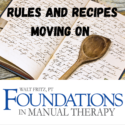Rules and Recipes: Moving on from older models of manual therapy

As I sat at the head of my treatment table this morning, looking down at my patient, I viewed their right leg in external rotation while at rest, I flashed back to my training. This patient is seeing me for sciatica-like symptoms on the right side. My training taught that pelvic asymmetries might manifest as one leg presenting as internally rotated and the other side as externally rotated. I learned diagnostic measures in standing and supine to check for those pelvic asymmetries and treat them accordingly, both at the pelvis (wedges, pelvic balancing techniques, etc.) and the legs themselves. Often, when I applied the work based on the theories presented, my patient’s symptoms improved. Many times, their pelvic torsions and leg rotations also seemed to balance out. These changes, both in reported pain and noted postural changes, worked to validate the theories taught to me.
But today, I had a thought. While my deconstruction of much of what I was taught in my MFR (and other) training is well known, I continue to reflect on my past’s good and bad. How do I know that my patient’s leg rotation deviations are new? How can I be confident they contribute to their pain and not just a manifestation of a life of living? Bunnell (1993) points to the “normalcy” of spinal asymmetry, with 98.4% of us having a rotational spinal curve (scoliosis/sub-scoliosis), and such spinal curves will, by association, create skeletal and postural changes up and down the body. If 98.4% of us have such changes, are 98.4% of us doomed to pain and other problems resulting from that spinal curvature?
Modality training teaches us recipes. They all do. Recipes are not causational-fact-based. MFR taught me to assess pelvic symmetry as if the pelvis is not balanced, then nothing we do will last. But other training lines teach different rules that often conflict with the rules I follow and with which I found success. My MFR training also taught that unless my patient realizes the emotion holding patterns that led to the pain/problem, they will never truly heal. I used strategies taught to me in my MFR training to get my patient to become more aware of those past emotional holding patterns and how to help them free themselves, often “pre-training” them by posting such information on my website. I was taught that emotions are stored in restricted fascia and passed that belief onto my patients, speaking with a sense of knowing and authority. I applied these principles, and my patients felt better. The adherence to the recipe, to me at least, validated the explanatory information as it was taught to me.
Do you recognize yourself in all of the above? I’m not just speaking to MFR, as such recipes exist in nearly every manual intervention model we can use/learn. I’ve heard from clinicians that if one doesn’t spend an equal amount of time working both limbs, then the patient will somehow leave the session out of balance. I’ve heard that if the feet are not balanced/leveled, then nothing we do elsewhere will be retained. I hear from upper cervical proponents that if C1 is not put in the proper alignment with the skull, work elsewhere is useless or that if we get C1 back into place, this alone will cause the body to restore its balance. Craniosacral therapy (CST) teaches that we must restore normal movement to the spinal dural tube, change is not attainable. The recipes are nearly endless. When we use a recipe, it often works, which often causes us to believe that the recipe was the correct one and, in some cases, the best one.
Is there a “best” modality? Is one recipe superior to others? Some believe that there is. I was taught so, but what sort of external measurement is done to validate these claims? I’ve seen internal validation by many (including myself in the past). “I’ve been a therapist for 30 years, and ABC MFR is the most effective modality in the history of healthcare.” In today’s pollical climate, fact-checking has become both envied and vilified. How does one go about fact-checking a claim about the superiority of one intervention over another? That is the place of rigorous research studies. To my knowledge, there has not been a reputable study that shows one branded or unbranded manual therapy intervention superior to another.
In a recent “The Thinking Practitioner” podcast, Til Luchau and Whitney Lowe interview Mark Bishop, PT, who talks about the science behind the factors at play that make our work useful. While we like to think our outcomes are due to our mastery of finding and impacting the tissues-at-fault, much more goes into the therapeutic interaction besides any tissue-based singular selection and impacts. The full transcript from the interview is available through the above link. Such conversations are becoming more common. Though many feel that their skills and education are being diminished, what is happening is there is a better understanding of how and why we, as manual therapists, influence our patient’s problems. There is dissonance from tissue-based believers, as it seems like these newer models detract from the positive outcomes they’ve seen using the recipe of their modality. If presented in a demeaning manner, few listen. But if presented constructively, one that does not put down the hands-on work we’ve done, growth can occur.
MFR, and all other modalities and styles of intervention, are helpful. On that, we can agree. But is the efficacy due to the reasons stated in those individual seminars or lines of training? Possibly. But there are aspects that are seldom discussed in those training as they are more generic and do not seem to contribute to an individual educator’s superiority claims. All of this disagreement can get ugly, I know. Continuing education is big business, and brand-building is an essential part of a big-budget model of training. If we all started speaking the same language, and acknowledging that there are marked similarities in our shared styles, the demand for any one model may diminish.
I learned some pretty hands-on skills in my MFR training and others, and I am thankful for that. What I now find less helpful is the rationales presented in those trainings, rationales that elude external validations. I learned recipes, not science. Recipes should not be discarded, but can you take that recipe and add a layer of credible understanding and utilization of neuroscience and behavioral science to form a more cohesive, universally accepted model? OI hope so.
So, as I sight down my patient’s body, I see that that externally rotated leg may be a part of her that may never change, nor may not need to. I cannot look back in time to see if it always existed in that fashion, and I no longer see the need to “correct” that deviation. I still use the hands-on intervention style taught to me in my MFR training; I just no longer force the recipe taught there. Should we, as physical therapists, massage therapists, etc., be telling our patients that their emotional holding patterns are the reason they cannot shed their pain? I believe that it is not my place, from a professional scope of practice perspective, nor do I think that this is even a credible interpretation of existing scientific understanding. Stay in your lane, folks.
Suggestions? Give a listen to The Thinking Practitioner podcast at the link above. That could be your gateway to a deeper and more thorough understanding of how manual therapy works. Don’t let detractors sway you; we mean well. Some of us, including myself, at times, get a bit pushy, but remember, we’ve all been where you are right now. I began crossing the chasm from tissue-based beliefs to a broader human-being-based understanding of pain and impacts 15 years ago, and I am still learning and evolving. If you’d like someone to walk across the bridge with you, please feel free to let me know.
Cheers,
Walt Fritz, PT
Foundations in Manual Therapy Seminars and The Pain Relief Center
Please consider checking out my online course offerings, , including a full hands-on online course. You can find the information here. Also, read up on my in-person seminars at the links in the menu on this page.



I have learned from you that I should stick to the interactive relationship with the client as requested by the chiropractor I worked for. In the above example I would not assume to intervene with that leg. I would ask the client if she wanted to do so. Perhaps ask her to move it this way and that and even have her touch places where the movement originates. The client knows the problem and even the origin of the problem; they just don’t know they know it or don’t know how to express it. When they are empowered to express themselves they become the healer. I am just the coach
Shared decision-making is seldom taught to clinicians such as us (PTs, MTs, Etc.), as much of education and continuing ed directs us into believing we need to KNOW. This is a shame and needs to change. Thanks for your comments, Hans.